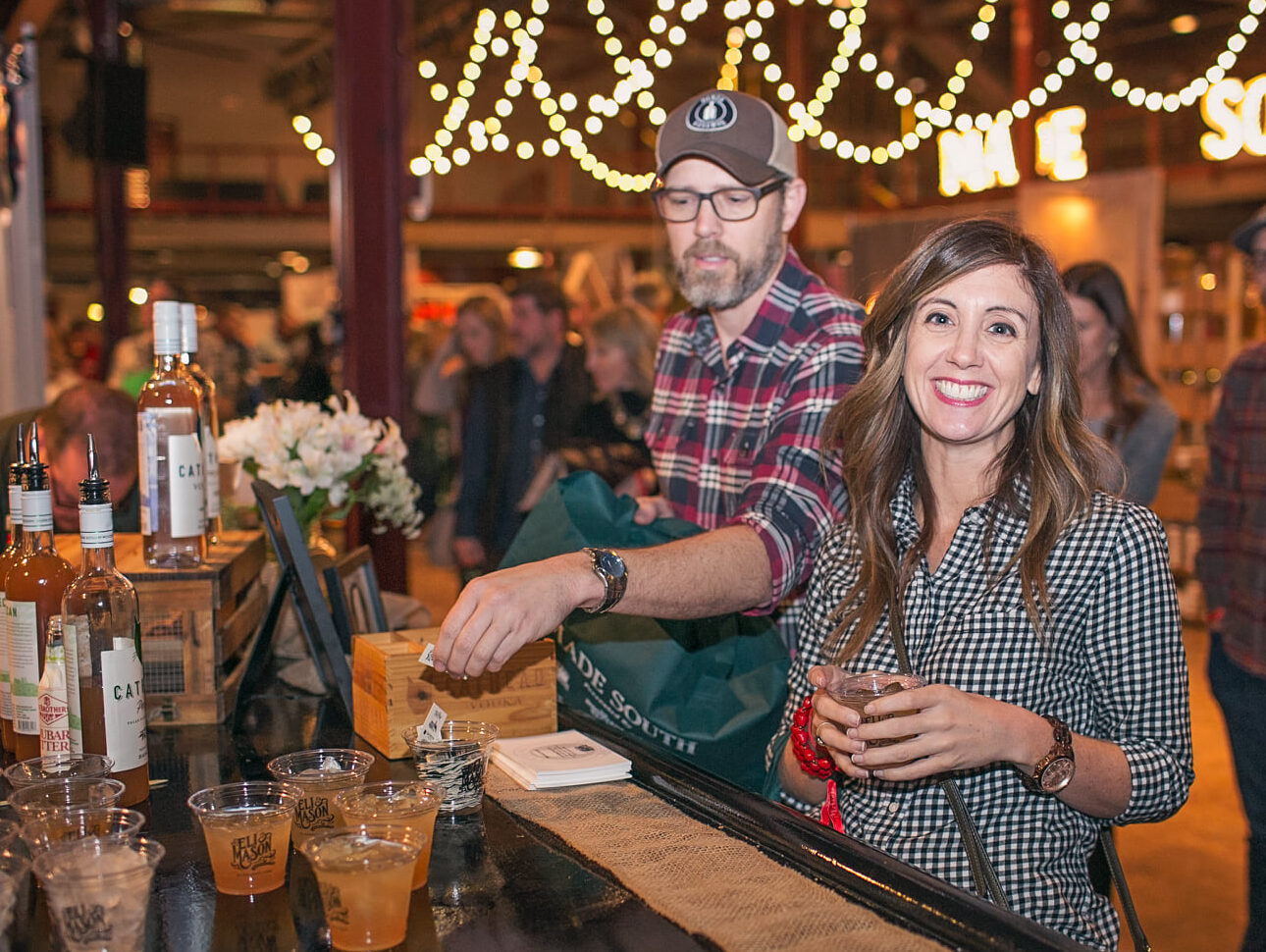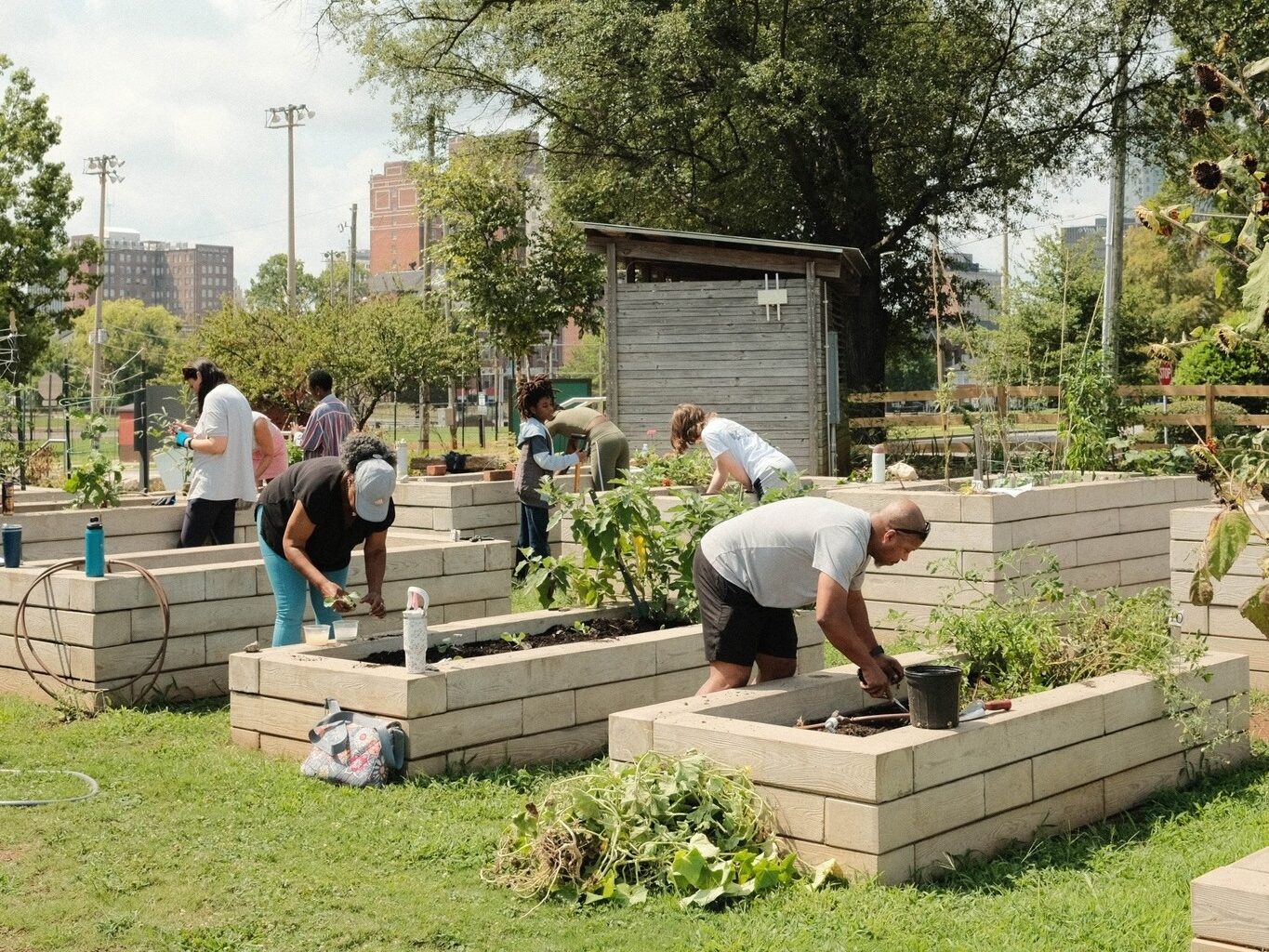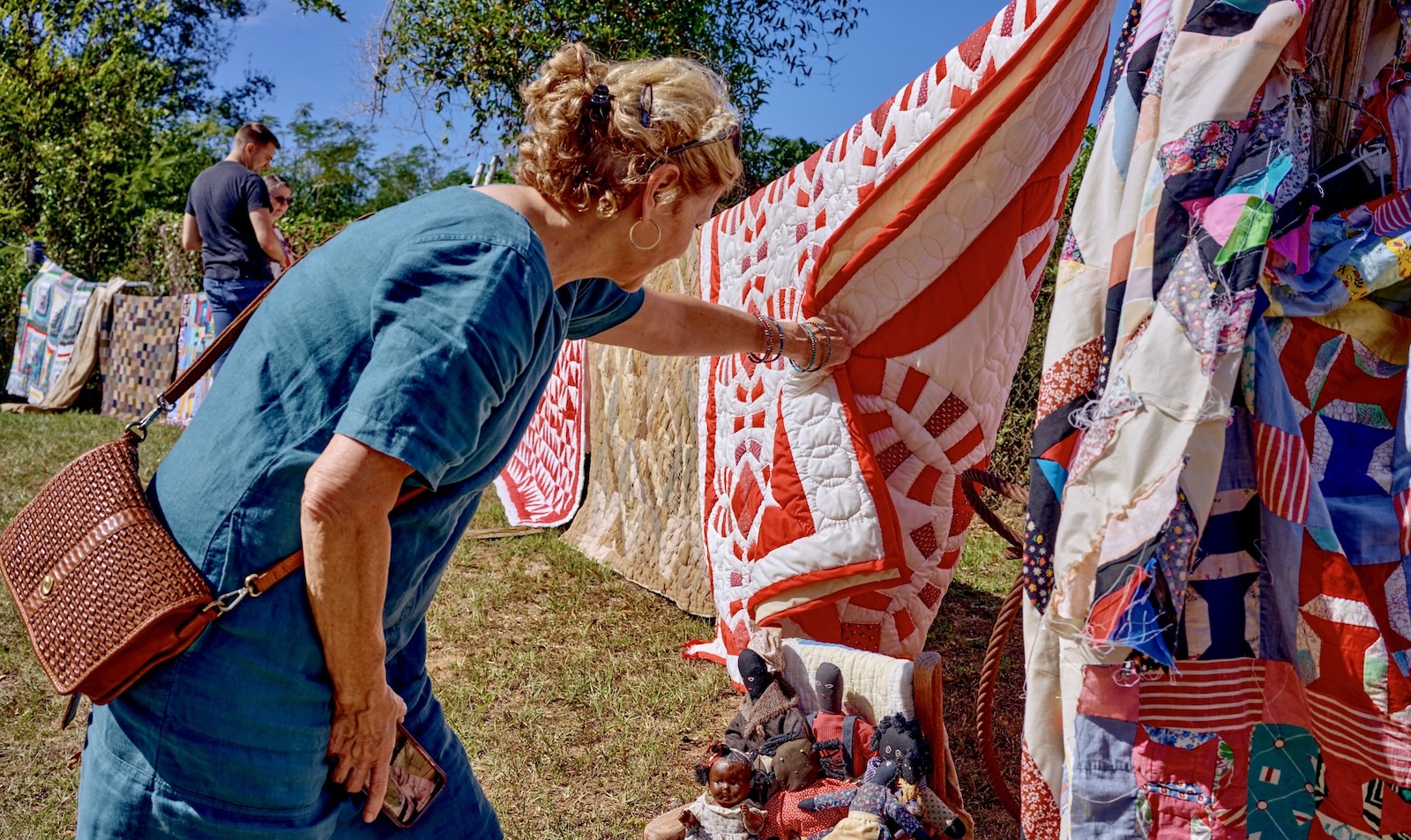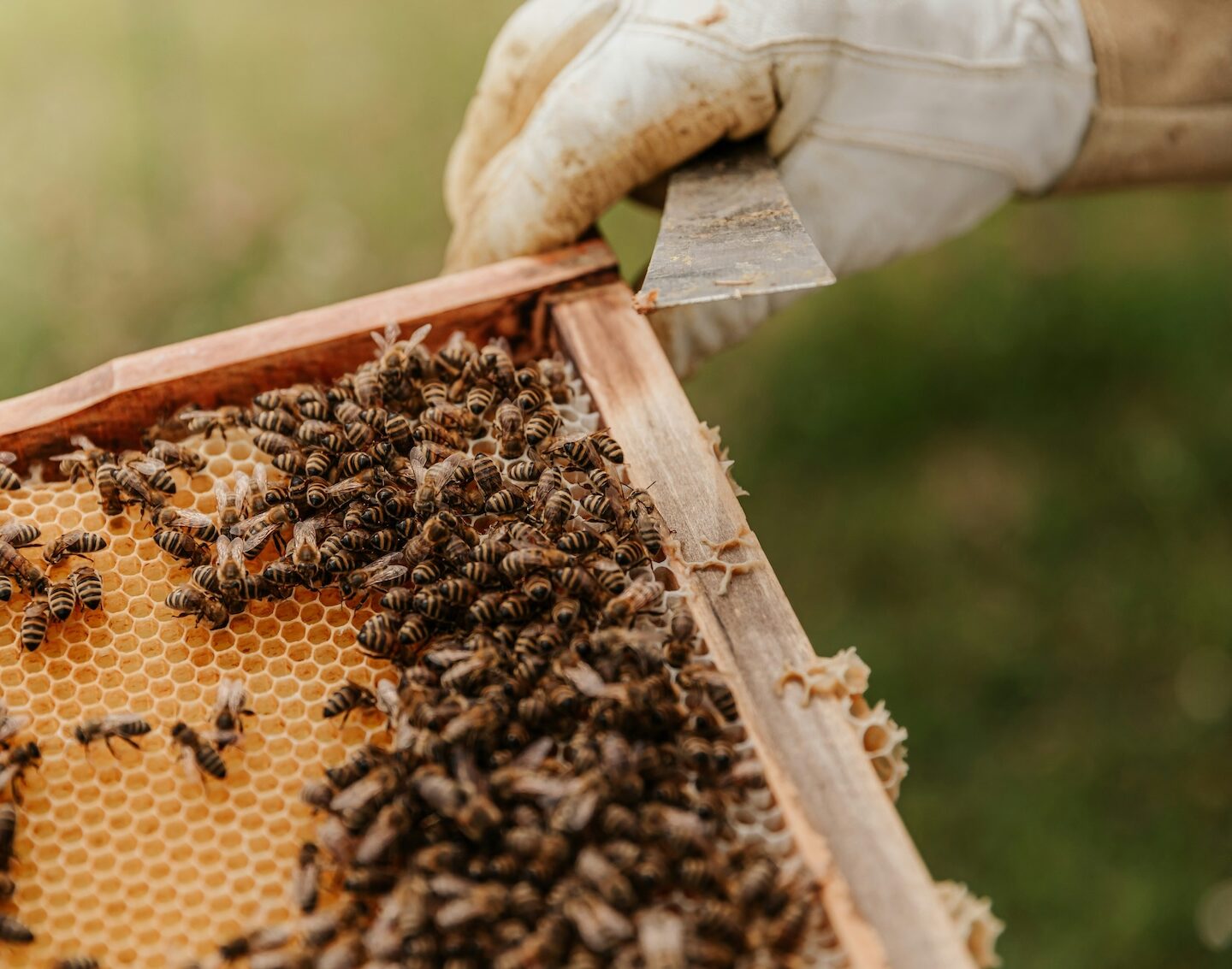For a good part of my life, I avoided mushrooms at all costs. I’d pick them off pizza slices. I’d use my fork to find them lurking in a serving of beef stroganoff and scooch them to the side of my plate. I’d mentally question, “Why in the world are they here?” every time I saw sliced mushrooms on an otherwise appetizing salad bar. And I harbored disdain for anyone who topped a nice steak or juicy burger with sautéed shrooms. Yet, today, one of my favorite pasta sauces is little more than mounds of fresh mushrooms cooked in butter. So, it’s safe to say my mushroom-hating days are behind me.
But, I can’t put my finger on exactly when or why my sentiments changed. Perhaps it was a slow but steady expansion of my palate due to my table manners refining as I grew up (thanks, Mom!), which kept me from dissecting my dinner. That, combined with my adult aversion to being branded a picky eater, pushed me to at least take a bite or two of mushrooms in various preparations. Whatever the reason (or reasons), it was a gradual awakening to their appeal, which is the opposite of how mushrooms themselves actually come into the world.
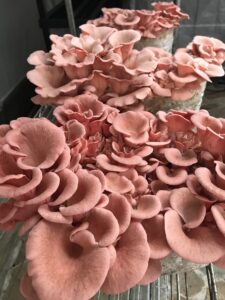
(Jennifer Kornegay/Contributed)
Anyone who’s noted the seemingly overnight appearance of white toadstools dotting a green lawn after a good rain knows mushrooms can pop up in a jiffy. Farmed mushrooms don’t sprout quite that quickly, but they do grow faster than many other crops. According to Allen Carroll, owner of Fungi Farm in Dadeville, Alabama, (and president of the Alabama Mushroom Society), for some types, seed to harvest can fly by in as little as one month.
He relishes teaching others the basics of mushroom cultivation, and while there are differences depending on the kind of mushroom and options in techniques, mushroom 101 goes something like this: It starts with inoculating a sterilized substrate (like straw, coconut husk fibers, or sawdust) with spawn (mycelium), an actively growing mushroom culture that acts like mushroom seed. In a few weeks, the spawn will have moved into the substrate (called colonization), and it’s relocated to a fruiting chamber, a carefully controlled environment where the substrate is kept watered while the tiny mushrooms-in-progress feed on the substrate’s material, gaining the needed energy to become the recognizable stem-and-cap form that’s then ready to be picked.
The process may be relatively quick, and it sounds simple, but there are challenges, and it can be labor-intensive. Still, the expansion of the mushroom farming industry in Alabama is keeping pace with the fast growth of the tasty fungus. According to Charles Crowther, who owns Grandview Mushrooms & More Farm in Montevallo with his wife Shiyrah, a few factors are driving the proliferation. “It’s kinda booming, with several new farms on the scene in recent years,” he says. “There’s more demand as more customers learn one, how good mushrooms are and two, how good they are for you. They’re high in vitamin D and great for immune health.” It’s also a sustainable and efficient form of agriculture.
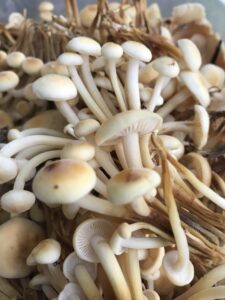
(Jennifer Kornegay/Contributed)
Carroll agrees. “Mushroom farming across the state is growing. There are close to 10 farms now in Alabama. We have more people ordering supplies from us, so our business is growing too.” As proof, he points to the Gulf Coast Fungi Fest held in Fairhope in 2023. “It was a big success, so we’re doing it again this year,” he says.
The Crowthers are helping create a thriving mushroom market, taking advantage of Facetime with customers who shop their stand at Pepper Place in Birmingham. “I love educating and teaching people about mushrooms, and we show people how to cook with them and serve up samples,” Shiyrah says. “Many people think they don’t like mushrooms because of the slimy texture they were subjected to as kids. We’re changing their minds,” Charles adds.
Their efforts are paying off. “More and more people are eating and seeking out the more exotic and gourmet mushrooms that our Alabama farms produce,” Carroll says. Alabama farms’ diversity means more varieties for mushroom aficionados and newbies to enjoy, and since most of these types have shorter shelf lives than the tried-and-true white button mushroom, they must be grown and sold locally.
Charles grows some oyster mushrooms, both gold and white, but his specialty is shitake mushrooms, and he grows these and his other species on logs, which sets Grandview apart. “We are the largest log-grown mushroom farm in Alabama,” he says, “with about 7,000 logs on several acres. Our mushrooms are grown outdoors, cultivated in dappled sunlight in God’s living room instead of a sterile, controlled environment; it gives them a unique flavor, as their nutrients come from the logs.” It’s similar to the concept of terroir in wine. And it’s a distinction Alabama chefs appreciate; Grandview mushrooms shine in dishes at Birmingham’s Hot and Hot Fish Club, Ovenbird, The Essential, and Automatic Seafood.
Hope Farm in Fairhope harvests more than 10 varieties, from lion’s mane and chestnut to trumpet and enoki, all grown in converted shipping containers. Many of its mushrooms end up on plates at its onsite restaurants. Houston Mushrooms in Montgomery sells its crop of pink and blue oyster mushrooms, lion’s mane, pioppino, and other types to capital city eateries like Ravello, Vintage Year, and La Jolla.
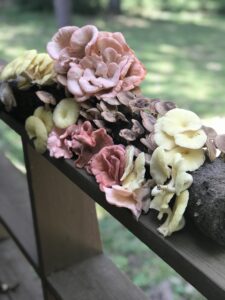
(Jennifer Kornegay/Contributed)
There is one common thread: Most of the state’s mushroom farms flourished from hobbies. “I started growing mushrooms for myself in 2010 and realized there weren’t many people growing them,” says Carroll. “I saw a huge opportunity.” He studied soil and environmental science at Auburn University’s agriculture school, yet there was no program available that taught mushroom cultivation, so he kept learning on his own. In 2017, he founded Fungi Farm with a partner and realized its focus should be providing the spawn, substrate, and other supplies for other farmers. “That’s now about 80-90 percent of our business, and we sell all over Alabama and the Southeast,” he says.
Brie Houston’s husband started their farm in 2018 as a hobby and began selling to area restaurants in 2019. “It’s taken off ever since,” she says. Charles’ business also branched out of a pastime. “I’ve been a landscaper for years, and love plants and growing things,” he says. He was piddling around with it when he moved to Birmingham in 2011 and noted the area’s interest in fresh mushrooms. “I saw an untapped niche, so I decided to graduate to a business in 2012.”
While his log-grown method is a mix of cultivating and foraging, true foraging—traipsing through the woods hunting for wild mushrooms—is on the rise too. Carroll is the guy in Alabama who trains people on what to look for. He wrote the wild mushroom certification course that anyone who wants to sell foraged shrooms must take, and he encourages people interested in finding their own mushrooms to go after chantarelles. “They’re easy to find in the woods due to their deep gold to bright orange color and are easy to identify,” he says. “They’re delicious too. And, you can often find them in abundance. Plus, you have to get them wild. Due to the way grow, they can’t be farmed, so they’re true treasures. ”
Carroll gets amped passing his passion for mushrooms on. And he’s not alone. Alabama’s mushroom farmers all seem captured by the veggies’ complex, earthy flavors, their health benefits, and even their natural beauty. “It was actually a photo of shitakes growing on logs that first grabbed me, just the look of it,” Charles says. He’s also captivated by the mushroom community camaraderie. “That’s the big reward,” he says, “seeing people at the farmers market get into mushrooms and delivering our produce to chefs and hearing their praise. It forges connections, and it’s great.”

